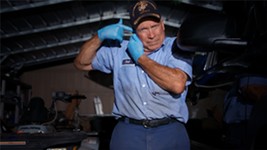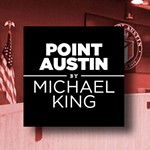SXSWedu Tackles High-Stakes Testing
How can student assessment be weaned away from an antiquated system?
By Richard Whittaker, 2:45PM, Thu. Mar. 12, 2015
Fifty years ago, big companies depended on annual stock takes to see what they had on their shelves, and schools tested once a year to see how well their kids were achieving. Half a century later, those same companies use real time inventory tracking, but schools are still using one-off, high-stakes tests to track achievement.
As many educators and policymakers at this week's SXSWedu conference wondered, how can student assessment be weaned away from that antiquated system?
Jessica Lindl, general manager of education gaming consortium GlassLab, described it as an ongoing conversation. Last year, she gave Texas Commissioner of Education Michael Williams a copy of SXSWedu speaker Anya Kamenetz's The Test, the journalist's examination of the 15-year torrent of testing and assessment reform in the wake of No Child Left Behind (NCLB). In an off-campus lunch at the Stephen F. Austin Intercontinental Hotel, Williams expressed some concern that Texas lawmakers (or, as he called them, "the 181 [in] the pink building") were still leaning too heavily, if sometimes inadvertently, on high-stakes testing. During the conversations that lead to the graduation and testing reforms in House Bill 5 last legislative session, he heard them discuss changes that would close the assessment gap, without necessarily tackling the achievement gap. He said, "I left that session thinking, I don't know the legislators are right, but I'm willing to have that conversation."
Two years ago, he asked lawmakers for $30 million to help develop new assessment tools, but over lunch he said he saw that the tools were already being developed. Even if the policymakers are trailing, educators are already adopting technologies that will give them better, deeper, more timely tracking of student achievement. For example, Austin ISD has recently launched a task force designed to not simply add educational technology and real time assessments to the curriculum, but to deconstruct the classroom experience and rebuild it with ed tech as a central component.
Kamenetz herself argued that, while people may not like talking about assessments, post-NCLB it's an unavoidable discussion. Moreover, in the wake of the Common Core and dozens of pieces of state level legislation, America's public school system is in "a time of pretty unique urgency." One major issue is defining the standards that are supposed to underline those assessments. In theory, they are supposed to be a metric of what skills educators and policymakers hope to instill in kids, to set them up for lifelong success. However, considering how fast jobs are changing, that's a rapidly moving target. Put simply, Kamenetz said, "We do not know what we need to know." Whatever those targets, she made a convincing argument that the current system does as much damage as good, noting that there is increasing evidence that test scores do little to indicate actual cognitive skills. Since between 25% and 40% of students suffer enough test anxiety to affect their performance, the test itself actually skews its own results. Moreover, because too much value is placed in testing's diagnostic capabilities, she said, "The tool becomes imbued with mystical properties."
Case in point: fill-in-the-bubble multiple choice tests. While they have become the backbone of standardized testing, they only became common because the technology evolved to read graphite on paper. As Lindl's colleague, Glasslab's director of learning and assessment Michelle Riconscente, said, "If we were developing assessments with the tools we have now, would we come up with the assessments we use now? I think not."
As lunch wrapped up and guests returned to the conference, Williams, who came off as somewhere between open-minded and contrite on the state's high stakes testing regimen, asked educators: What changes would they like to see? While the reforms under HB 5 were generally applauded as at least a step forward, his musings on adding student portfolio review to graduation tracks met with audible approval (he quickly clarified that this was only "a possibility"). That echoed the general push from GlassLab, whose staff said they saw their market of opportunity being in charting what the current system sees as indefinable: For example, a standardized test is great at asking kids whether they can multiply two by two, but near worthless at handling seemingly more nebulous but vital skills like collaboration.
So it seems that there is broad consensus among educators, administrators, and vendors to make structural changes to how and why kids are assessed. The question now is, how much will those 181 lawmakers in that pink building be able – or willing – to rebuild the high stakes monolith?
Got something to say on the subject? Send a letter to the editor.
A note to readers: Bold and uncensored, The Austin Chronicle has been Austin’s independent news source for over 40 years, expressing the community’s political and environmental concerns and supporting its active cultural scene. Now more than ever, we need your support to continue supplying Austin with independent, free press. If real news is important to you, please consider making a donation of $5, $10 or whatever you can afford, to help keep our journalism on stands.











